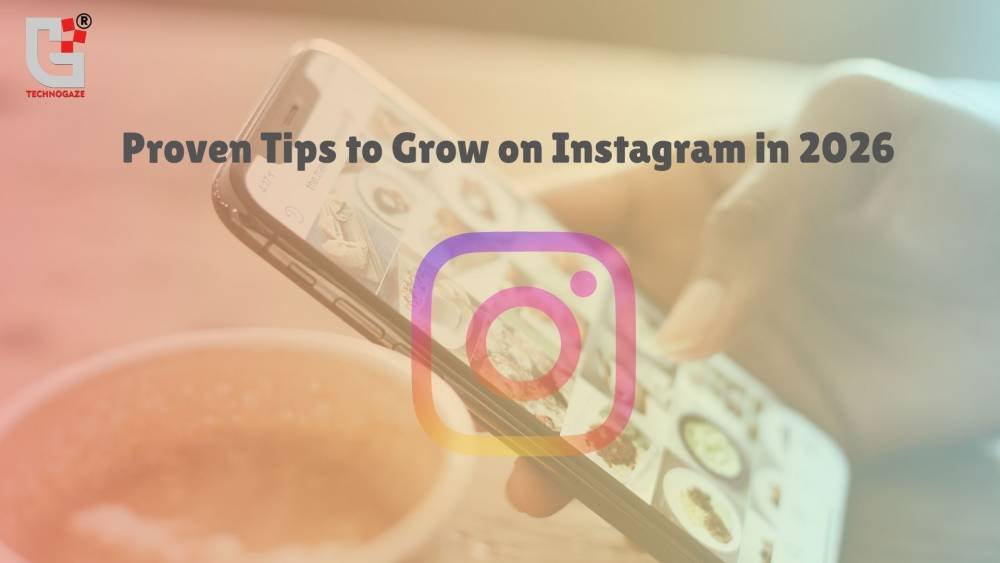
In a digital landscape that’s always shifting, writing blog content that truly ranks on Google requires more than ticking SEO checkboxes; it calls for a blend of precision, purpose, and a deep understanding of your audience.
Gone are the days when keyword stuffing could fool search engines.
In times of such extensive competition, the content has to be exclusively written in a manner that it should look like it is crafted after in-depth research and strategic thinking that will enhance the value of the content to make it reader-centric. Google’s algorithms have now evolved significantly to recognise worldly-wise and relevant. The quality of the content is the priority over mechanically optimised content.
The blogs need to do more than rank; they should educate, engage, and earn trust. It should speak directly to the needs of your readers while aligning with the technical demands of SEO in a natural, unforced way.
This guide walks you through nine essential principles that form the backbone of high-performing blog content that climbs search rankings and connects with readers on a meaningful level.
We begin with intentional keyword research, not just finding popular terms, but understanding search intent and matching your message to your audience’s needs. From there, we move into content development, where depth, originality, and expertise are non-negotiable. You’ll learn how to integrate keywords seamlessly, structure your posts for clarity and flow, and enrich them with visual and multimedia elements that hold attention.
Let's dive into this article to explore the depths of the strategic side of internal and external linking, from curating the headlines and meta-family designing that will make your content compelling to attract more clicks to promote it in ways that build authority and drive backlinks. Now, wait no longer and learn to ace the modern techniques of building SEO-friendly content with TechnoGaze and create a buzz in the market.
1. Start with Purposeful Keyword Research
Before typing your first word, give it a thought and brainstorm on “What is my reader really searching for?”
The research process for the keywords is subject to comprehension and deciding the type of your target audience search engines to meet the requirement. However, it is not merely about finding out the terms that are mostly searched on the internet, but maintaining the alignment of your content to detect search intent and search possibilities. In other words, effective keyword research begins not with tools, but with empathy. Step into your reader’s shoes, visualise their intent, and imagine the questions they are typing into the search bar. Your aim is to decode
these queries and translate them into content that aligns seamlessly with both their expectations and your expertise.
Use the tools that will benefit you:
Creating a thoughtful essence of your content, keeping search intent in mind, has the power of making your content stand out from the crowd. By incorporating search intent and keywords into your copies through utilising the tools Google Keyword Planner, Ahrefs, SEMrush, and Ubersuggest. By the help of using such authentic platforms, your content will be elevated in terms of quality, relevance, and you will be able to gauge the competitiveness of phrases within the related categories and niches as per fairly estimated monthly search volumes.
Numbers alone do not drive decisions:
Focus on intent classification if the reader is seeking knowledge, comparing options, or ready to take action? Understanding the underlying purpose helps you craft content that delivers exactly what your audience craves.
Long Tail Keywords are gamechangers:
Incorporating long-tail keywords acts as a game changer; the keywords that are nuanced, specific search terms are designed to reflect deeper user intent. For instance, if you are opting for a title like “SEO blog,” it will sound a little hazy and difficult to stand out among all the other blogs available on the internet. Instead of going for woolgathering, curate your content to address topics such as “How to Write SEO-Friendly Blog Posts That Actually Rank.” These phrases may attract less traffic individually, but they yield more qualified, intent-driven visitors.
The true goal is not to chase search volume blindly, but to find the intersection where relevance, value, and discoverability meet.
2. Create Content That Is Rich, Relevant, and Entirely Reader-Focused
With a clear understanding of your topic and target keywords, your next mission is to create content that is not only optimised but also deeply meaningful. In 2025, Google's algorithms will reward usefulness, depth, and sincerity more than ever before. But beyond the algorithm, your real audience is human, and they deserve more than just answers. They deserve insights from the experts.
What defines valuable content?
Ideology is the right methodology:
Start with depth and comprehensiveness. Don’t skim over ideas and immerse your reader in them. Explore the nuances, address connected questions, and anticipate concerns before they arise. You are not writing a blog; you are offering guidance, mentorship, and clarity.
Showcase real expertise:
This is where your unique voice matters. Research and find something refreshing with the key element of relevance; execute E-E-A-T Experience, Expertise, Authoritativeness, and Trustworthiness; it has become quintessential for visibility and credibility.
Always strive to provide unique value:
Always give yourself a nudge to reload your thoughts in an impeccably unique way and try to offer something that is not seen in every other rat race on the internet. Showcase the difference you carry in your vision. Whatever it is, let it breathe life into your article.
Pro tip:
Write as if you’re sitting across from a genuinely curious person. Avoid robotic tones, skip the jargon unless it’s essential, and lead with clarity. Your reader should feel spoken to, not written at.
3. Use Keywords Thoughtfully, Authentically, and Strategically
A thought process is quintessential for crafting content that will win the SERP. While keywords remain central to SEO, their power lies in how naturally they’re used, not just where they appear. A well-crafted piece will weave keywords into its fabric without making them feel like intrusions.
Smart keywords practices to follow:
Incorporate your primary keyword strategically, placing it in the title, URL, introductory paragraph, at least one subheading, and sparingly throughout the body. But let context and readability guide you.
Layer in semantic and related keywords to build topical relevance. If your focus is “SEO writing,” enrich your content with terms like “meta tags,” “on-page optimisation,” or “Google ranking factors.” These contextual cues help search engines understand the broader theme of your post.
Above all, steer clear of keyword stuffing. Not only does it dilute the reading experience, but it also sends red flags to search engines. Remember, your priority is to inform, not manipulate.
Think of keywords as signals, not shackles; they point the way to your content, but they should never override your message.
4. Structure for Engagement, Clarity, and Search Discoverability
A brilliant idea, poorly structured, often goes unnoticed. Structure is not merely a matter of formatting, it’s a storytelling framework that sustains attention and encourages exploration.
How to structure intelligently:
Organise your thoughts using a hierarchy of headings and subheadings (H2s, H3s, and H4s). These elements break the post into digestible sections and guide the reader from one idea to the next.
Use bulleted and numbered lists sparingly, but with purpose. They help highlight essential takeaways and make information scannable in a fast-paced reading environment.
For longer pieces, include a table of contents. It gives readers immediate access to specific sections and increases the likelihood of your post appearing with rich site links in search results.
You can also optimise for featured snippets by offering concise, standalone answers to common questions within the body, either in paragraph form or structured lists.
Modern readers skim first and commit later. Your formatting should invite them to linger, not leave.
5. Enhance with Multimedia and Technical Finesse
In an era of different visual fashions, we have to set our narrative in a crisp and clear manner and incorporating it with multimedia has become an integral approach of content creation. When combined well, visuals elevate understanding, foster engagement, and extend the time a user spends with your post.
In an era of different visual fashions, we have to set our narrative in a crisp and clear manner and incorporating it with multimedia has become an integral approach of content creation. When combined well, visuals elevate understanding, foster engagement, and extend the time a user spends with your post.
Consider these enhancements:
• Images should complement your content meaningfully. Rename them descriptively and apply alt text that reflects the image’s content and relevance.
• Use infographics for data-heavy concepts or process breakdowns—they’re more digestible and shareable.
• Embed videos, walkthroughs, or tutorials to increase value and engagement time.
• Implement schema markup such as FAQ, How-To, or Article schemas. Structured data not only aids search engines but can boost your presence in rich results.
Technically, your site must be mobile responsive, and images should be compressed to ensure fast load times. These are foundational, not optional, in today’s SEO landscape.
6. Link with Strategy: Build Authority, Context, and Trust
A well-placed link is a silent endorsement. It extends your reader’s journey, enhances your article’s authority, and strengthens your site’s SEO structure.
Your link strategy should include:
• Internal links that guide readers to related articles, category pages, or cornerstone content. This fosters deeper site exploration and distributes SEO value across your domain.
• External links that point to credible, authoritative sources. Think of universities, government sites, or respected industry leaders. Every external reference should validate your point and enrich the user’s understanding.
Avoid random or excessive linking. Each connection should be intentional and relevant.
7. Write Headlines and Meta Descriptions That Invite Clicks
First impressions happen on the search results page. Your headline and meta description are your handshake, your pitch, your invitation.
To craft these effectively:
• Use emotionally resonant, keyword-infused titles that spark curiosity. Phrases like
ultimate guide, how-to, or best tools signal value.
• Keep meta descriptions under 160 characters, and always construct a clear summary with an eye-catching reason to click.
• Where relevant, add urgency (Don’t miss, Now updated) or exclusivity (Only strategy you need), but always stay honest and on-brand.
Before finalising, read your headline and meta description aloud. Would you be intrigued enough to click?
8. Refresh and Optimise Over Time
SEO success is rarely a one-time triumph. It is a long-term strategy built on consistent refinement and a willingness to evolve.
Maintain content health by:
• Reviewing older posts quarterly. Update statistics, revise outdated statements, and improve structure where necessary.
• Expanding content based on emerging trends or user queries.
• Leveraging tools like Google Search Console to find underperforming keywords that could be optimised or targeted with new content.
A great blog post can stay relevant for years, but only if it grows alongside your audience and your industry.
9. Promote Strategically and Build Meaningful Backlinks
Even the best content can go unnoticed without intentional promotion. Publishing is just the beginning, the real momentum comes from visibility.
Effective promotional strategies include:
• Sharing across social media with platform-specific messaging and visuals.
• Highlighting posts in your newsletter, accompanied by a personal note or exclusive insight.
• Pitching articles to fellow bloggers and publications, suggesting collaborative content or guest contributions.
• Repurposing content into short videos, audio clips, downloadable resources, or carousel posts for wider reach.
And don’t forget: quality backlinks remain one of the strongest signals to search engines. Earning them takes effort, but great content paired with genuine outreach goes a long way.
• Purpose-driven keyword research
• Compelling, keyword-optimised headline
• Clear and logical heading structure
• Natural use of LSI and related terms
• Deep, expert-level content
• Multimedia assets and structured data
• Thoughtful internal and external links
• Engaging meta description
• Content regularly updated
• Promotion plan and backlink strategy in motion
To write SEO-friendly blog posts in 2025 is to master both art and algorithm. When you lead with empathy, structure your ideas with intention, and enrich your content with insight, you not only please search engines—you build genuine trust with your audience.
Every post is an opportunity to connect, inform, and empower. Let that purpose guide your writing.
Latest Posts
-
1November 22, 2025
-
2November 15, 2025
-
3
-
4October 11, 2025
-
5








